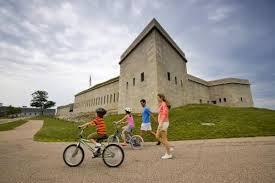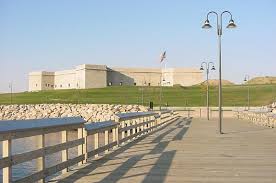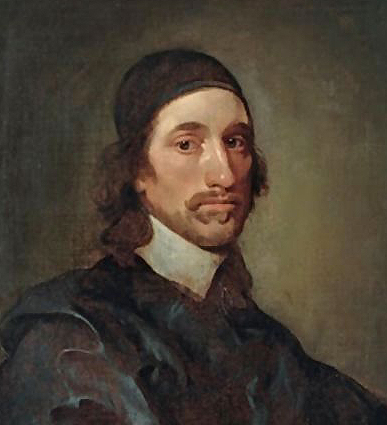

Fort Trumbull State Park, located on sixteen acres at the entrance to New London harbor, is as unique as it is historic. The site is dominated by a large 19th century coastal defense fort, but that is only one aspect of the nearly 200 years worth of history that took place here.
That look back in time is offered in a lively and informative way on two floors of exhibits at the Visitors Center. Touch screen interactive displays, theaters, dioramas, along with wall-mounted information panels combine to bring the past nicely into the present.
The story begins when the native people who lived in southeastern Connecticut called it Mamacock.
It continues through both wars to free the American colonies from the mother country, and the Civil War that nearly destroyed the young nation. In varying degrees, Fort Trumbull played a role in each of those historic events
The colorfully illustrated displays about the War of 1812, explore the causes and actions of that largely forgotten struggle that took place 29 years after the United States and Great Britain signed a peace treaty.
In the Revolutionary War British troops landed nearby, engaged the out manned American defenders before marching inland to burn New London, a city made prosperous by a robust maritime economy. That is an important part of the story that is told here.
Both world wars in the 20th century are explored here as well.
Museum designers have done a commendable effort to place the Fort Trumbull story in the context of the times.
The role scientists and engineers played here in developing the sophisticated weapons needed in anti-submarine warfare is offered to visitors. It starts with the Navy’s Experimental Research Station in 1917-1919 and progresses through the Cold War, 1949-1990, and the work done at the Underwater Sound Laboratory.
Also part of the presentations is the role Fort Trumbull played in training officers for the Revenue Cutter Service and its successor agency, the Coast Guard which maintained its academy here until 1932 when it relocated to its present site about a mile upriver.
In World War II the Merchant Marine Officers Training School was located here. The critical role play by those who sailed unarmed ships that took supplies to the war fronts is recounted in exhibit form in the Visitors Center.
Soldiers, sailors and scientists can all lay claim to a piece of the history that was made here.
Mark Twain even plays a part in the Fort Trumbull story. There’s a narrated excerpt of his short story, A Curious Experience, set at the fort during the Civil War when it served as a recruiting center for Union forces.
The fort is open for self-guided tours aided by interpretive signs and nearby is a memorial to the heroic officers of the merchant marine who died in World War II after being trained here.
History buffs can find much to like here, but it is worth a visit from those who just enjoy walks along the water and the spectacular views from atop the fort.
As it says inside the Visitors Center, Fort Trumbull State Park is a place of innovation, a place of wind, water and memories.
——————————————————————————————–
Fort Trumbull State Park http://www.ct.gov/deep/forttrumbull
50 Walbach Street
New London, CT 06320
Highway access: I-95 Ex. 83N/84S
Phone: 860-444-7591
Visitor’s Center and tours: adults $6; children (6-12), $2; 5 and under, no charge. Grounds: free.rounds opened all year, daily 8 a.m.- sunset. Fort and Visitors Center: Memorial Day-Columbus Day, Wed. – Sunday, 9 a.m. 5 p.m.
———————————————————————————————












